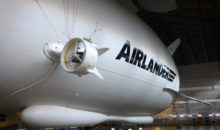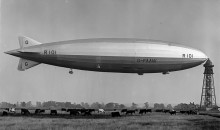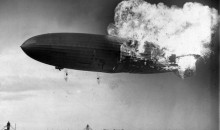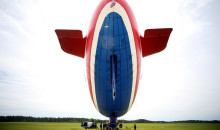World’s longest aircraft takes disaster relief to new heights
British engineers say their Airlander 10 airship, once owned by the US Army, could revolutionise aviation, particularly in the area of disaster relief. The 302-foot long aircraft is powered by inert helium and can carry huge payloads of cargo. All it needs is a level surface on which to land. Jim Drury went to see it.
It runs on inert helium and can land almost anywhere there’s a level surface. Airlander 10’s developers say their airship could revolutionise air cargo transportation. It was originally owned by the US Army, but has been sold back to its designers, UK company Hybrid Air Vehicles, who are repurposing it for commercial use.
Head of Communications Chris Daniels says Airlander’s aerodynamic shape allows the craft to generate lift like an aeroplane wing.
“About 40 percent of its lift comes from being wing-shaped and about 60 percent comes from being filled with helium, from being lighter than air and that’s the real difference in technology, it’s a fusion of technologies going together. And the final point about ourselves is we’re very low carbon, we’re very green.”
Running on one engine it uses up to 70 percent less fuel than traditional aircraft, despite being – at 92 metres – the longest aircraft in the world. A two-man crew and up to 22 passengers can be housed in this pod held underneath the craft’s hull. Technical director Mike Durham says engines on the ship’s corners can be rotated to give upward or downward thrust like a helicopter. It’s also unique in other ways.
“You’ve got helium inside the hull, so all of the structure is being lifted that way. You can then put your payload on and you lift that either aerodynamically, courtesy of the shaping of the hull, or by vectored thrust……The whole hull of this ship is pressure stabilised, so there’s no internal structure at all. So it’s an external membrane skin [which is] very thin and has incredibly high tenacity.”
The vehicle can hold up to five tonnes of cargo below it, and a larger version – the 100 million USD Airlander 50 – will take ten times that amount. The airship’s ability to fly for five days straight makes it ideal for delivering aid to disaster zones, along with its ability to land almost anywhere.
“So it can land vertically when it’s very heavy, full of payload. It takes a very short landing, perhaps less than its own hull length, so there’s no need for a runway whatsoever. It needs just a broadly flat space…. It can land on water, ice, swamp, it can land on any reasonably flat surface.” – Steve McGlennan, Chief Executive.
The inaugural test flight took place in August 2012, over the enormous Bedfordshire hangars in which Airlander 10 is housed.
The company has ambitious plans – including a twice round the world trip to some of the globe’s biggest cities. Hybrid Air Vehicles are buoyed by their new aircraft’s potential – and say they’re sure the technology will take off in a big way.
via – Reuters.com.




